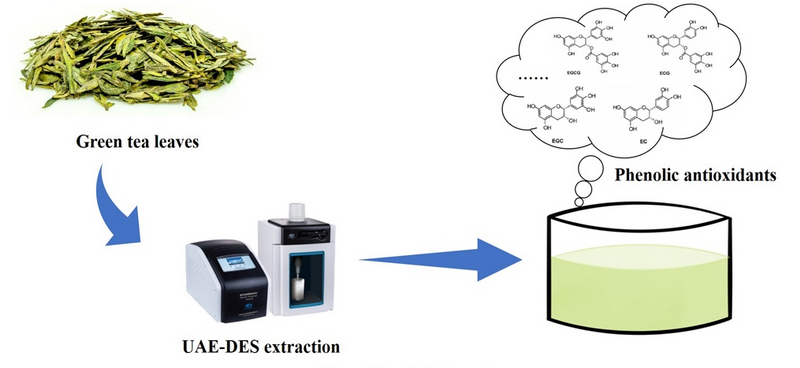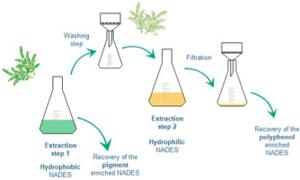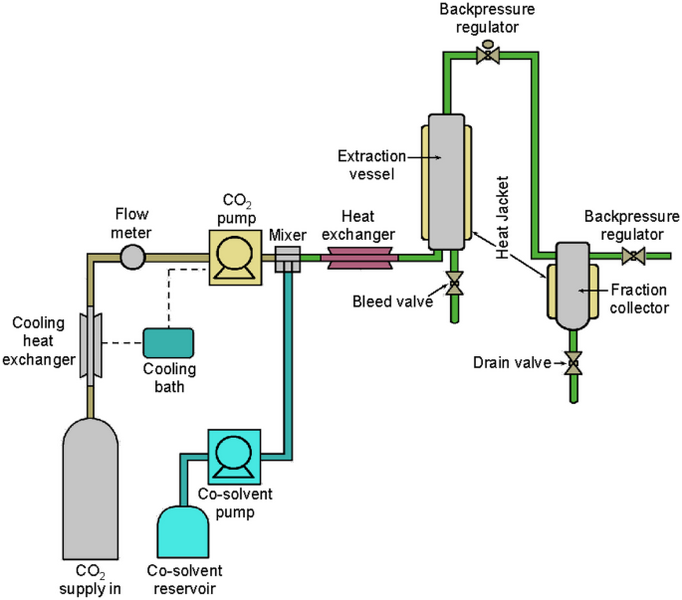Content Menu
● Understanding Green Tea Polyphenols
● Conventional Extraction Methods
>> Hot Water Extraction
>> Ethanol Extraction
● Advanced Extraction Techniques
>> Ultrasound-Assisted Extraction (UAE)
>> Microwave-Assisted Extraction (MAE)
>> Green Extraction Using Deep Eutectic Solvents (DES)
● Optimizing Extraction Conditions
● Analytical Techniques for Polyphenol Quantification
● Industrial-Scale Extraction
● Emerging Technologies
● Conclusion
● FAQ
>> 1. What are the main polyphenols found in green tea?
>> 2. Why is it important to extract polyphenols from green tea?
>> 3. What is the most efficient method for extracting polyphenols from green tea?
>> 4. How does the extraction method affect the quality of green tea polyphenols?
>> 5. Can I extract green tea polyphenols at home?
● Citations:
Green tea is renowned for its high concentration of polyphenols, particularly catechins, which are responsible for many of its health benefits. Extracting these valuable compounds efficiently is crucial for both research and commercial applications. This article will explore various methods to extract polyphenols from green tea, discussing their advantages, limitations, and optimal conditions.

Understanding Green Tea Polyphenols
Before delving into extraction methods, it's essential to understand the nature of green tea polyphenols. The main polyphenolic compounds in green tea are catechins, which include:
- Epigallocatechin gallate (EGCG)
- Epigallocatechin (EGC)
- Epicatechin gallate (ECG)
- Epicatechin (EC)
Among these, EGCG is the most abundant and extensively studied, accounting for 50-70% of the total catechins in green tea[1][3].
Conventional Extraction Methods
Hot Water Extraction
Hot water extraction is the simplest and most traditional method for extracting polyphenols from green tea. This method mimics the brewing process and is often used as a baseline for comparison with other techniques.
Procedure:
1. Mix green tea powder with hot water (85°C)
2. Maintain the mixture at room temperature for a specific duration
3. Centrifuge the mixture to separate the liquid extract
While simple, this method may not yield the highest concentration of polyphenols compared to more advanced techniques[1].
Ethanol Extraction
Ethanol is another common solvent used for green tea polyphenol extraction. It's often preferred due to its lower toxicity compared to other organic solvents.
Procedure:
1. Mix green tea powder with ethanol (typically 70% concentration)
2. Shake the mixture at room temperature for an extended period (e.g., 24 hours)
3. Centrifuge to obtain the liquid extract
Ethanol extraction can yield higher polyphenol concentrations than water extraction but requires longer processing times[1].
Advanced Extraction Techniques
Ultrasound-Assisted Extraction (UAE)
UAE is an efficient method that uses ultrasonic waves to enhance the extraction process. The cavitation effect created by these waves helps break down cell walls, improving solvent penetration and mass transfer.
Procedure:
1. Mix green tea powder with the chosen solvent
2. Subject the mixture to ultrasonic treatment
3. Centrifuge to obtain the extract
UAE can significantly reduce extraction time and increase yield compared to conventional methods[1].
Microwave-Assisted Extraction (MAE)
MAE utilizes microwave energy to heat the solvent and sample rapidly, causing efficient cell disruption and quick release of target compounds.
Procedure:
1. Mix green tea powder with the solvent in a microwave-safe container
2. Subject the mixture to microwave irradiation for a specific duration
3. Cool and centrifuge to obtain the extract
Research has shown that microwaving green tea for 7.8 minutes, repeated three times, can be optimal for polyphenol extraction[2].
Green Extraction Using Deep Eutectic Solvents (DES)
Deep eutectic solvents are emerging as a green alternative to traditional organic solvents. They are biodegradable, non-toxic, and can be tailored for specific applications.
Procedure:
1. Prepare the DES (e.g., choline chloride-glycerol)
2. Mix green tea powder with the DES
3. Apply ultrasound-assisted extraction
4. Centrifuge to obtain the extract
A study found that using choline chloride-glycerol as a DES, combined with UAE, yielded higher total phenolic content and antioxidant activity compared to conventional methods[1][5].

Optimizing Extraction Conditions
To maximize polyphenol yield, several parameters need to be optimized:
1. Liquid-to-solid ratio: The optimal ratio varies depending on the extraction method but generally ranges from 20:1 to 40:1 (mL/g)[1].
2. Extraction time: This can vary from a few minutes (for UAE and MAE) to several hours (for conventional methods).
3. Temperature: Higher temperatures can increase extraction efficiency but may also lead to degradation of some polyphenols. The optimal temperature range is typically between 60-80°C.
4. Solvent type and concentration: Water, ethanol, or their mixtures are commonly used. The optimal concentration depends on the specific polyphenols targeted.
5. pH: Slightly acidic conditions (pH 4-5) can enhance the stability of catechins during extraction.
Response Surface Methodology (RSM) is often employed to optimize these parameters simultaneously, as demonstrated in several studies[1][5].
Analytical Techniques for Polyphenol Quantification
After extraction, it's crucial to quantify the polyphenol content. Common analytical methods include:
1. Total Phenolic Content (TPC) assay: Usually performed using the Folin-Ciocalteu method.
2. High-Performance Liquid Chromatography (HPLC): Allows for identification and quantification of individual catechins.
3. Antioxidant activity assays: DPPH, ABTS, and FRAP assays are commonly used to evaluate the antioxidant potential of the extracts.
Industrial-Scale Extraction
For commercial production of green tea extracts, larger-scale extraction methods are employed. These may include:
1. Pressurized Liquid Extraction (PLE): Uses high pressure to maintain solvents in a liquid state above their boiling points, enhancing extraction efficiency.
2. Supercritical Fluid Extraction (SFE): Typically uses supercritical CO2, sometimes with ethanol as a co-solvent, for efficient and clean extraction.
3. Continuous flow systems: Allow for larger volumes and potentially more efficient extraction compared to batch processes.
Emerging Technologies
Research is ongoing to develop new, more efficient extraction methods. Some promising approaches include:
1. Enzyme-assisted extraction: Uses enzymes to break down cell walls, potentially increasing yield and selectivity.
2. Pulsed electric field extraction: Applies short pulses of high voltage to disrupt cell membranes, enhancing mass transfer.
3. Ohmic heating: Uses electric current to heat the sample uniformly, potentially improving extraction efficiency.
Conclusion
Extracting polyphenols from green tea is a complex process that requires careful optimization of various parameters. While traditional methods like hot water and ethanol extraction are still widely used, advanced techniques such as UAE, MAE, and green extraction using DES offer promising alternatives with higher efficiency and potentially lower environmental impact. The choice of method depends on factors such as desired yield, purity, scale of operation, and intended application of the extract. As research continues, new technologies are likely to emerge, further improving our ability to harness the beneficial compounds in green tea.

FAQ
1. What are the main polyphenols found in green tea?
The main polyphenols in green tea are catechins, including epigallocatechin gallate (EGCG), epigallocatechin (EGC), epicatechin gallate (ECG), and epicatechin (EC). EGCG is the most abundant, accounting for 50-70% of the total catechins.
2. Why is it important to extract polyphenols from green tea?
Extracting polyphenols from green tea is important because these compounds have numerous health benefits, including antioxidant, anti-inflammatory, and potential anti-cancer properties. Extracted polyphenols can be used in research, dietary supplements, and functional foods.
3. What is the most efficient method for extracting polyphenols from green tea?
The most efficient method can vary depending on specific requirements, but ultrasound-assisted extraction (UAE) combined with deep eutectic solvents (DES) has shown promising results in terms of yield and environmental friendliness. However, the choice of method depends on factors such as scale, desired purity, and intended application.
4. How does the extraction method affect the quality of green tea polyphenols?
The extraction method can significantly affect both the quantity and quality of extracted polyphenols. Factors such as temperature, solvent type, and extraction time can influence the stability and composition of the extracted compounds. Harsh conditions may lead to degradation of some polyphenols, while gentler methods may preserve more of the original compounds.
5. Can I extract green tea polyphenols at home?
While professional extraction methods yield the highest and purest concentrations of polyphenols, you can extract some polyphenols at home by brewing green tea. For a stronger extract, use water at about 80°C (176°F), steep for 3-5 minutes, and use about 2 grams of tea leaves per 100 ml of water. However, home methods will not be as efficient or concentrated as laboratory or industrial extraction techniques.
Citations:
[1] https://pmc.ncbi.nlm.nih.gov/articles/PMC7555212/
[2] https://www.frontiersin.org/files/Articles/1175893/fsufs-07-1175893-HTML-r1/image_m/fsufs-07-1175893-g002.jpg?sa=X&ved=2ahUKEwiTx_Gm1cmKAxXokokEHfX-Ny4Q_B16BAgDEAI
[3] https://pmc.ncbi.nlm.nih.gov/articles/PMC6356332/
[4] https://www.youtube.com/watch?v=aUgY7luf9hU
[5] https://pubmed.ncbi.nlm.nih.gov/32854245/
[6] https://pubs.aip.org/aip/acp/article-pdf/doi/10.1063/5.0108679/16204719/100006_1_online.pdf
[7] https://www.mountsinai.org/health-library/herb/green-tea
[8] https://encyclopedia.pub/video/291
[9] https://bioresources.cnr.ncsu.edu/resources/optimized-green-extraction-conditions-of-matcha-green-tea-camellia-sinensis-using-central-composite-design-for-maximal-polyphenol-and-antioxidant-contents/






























